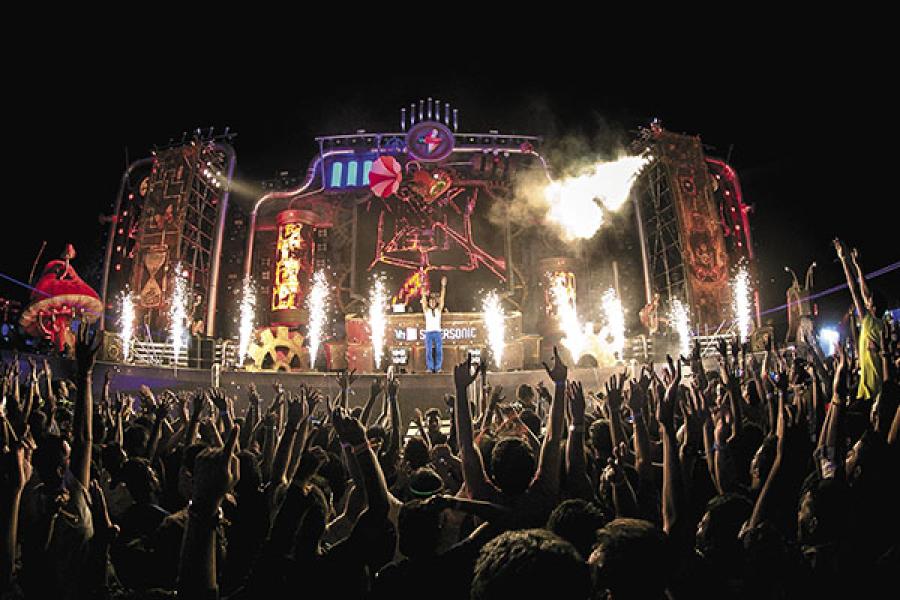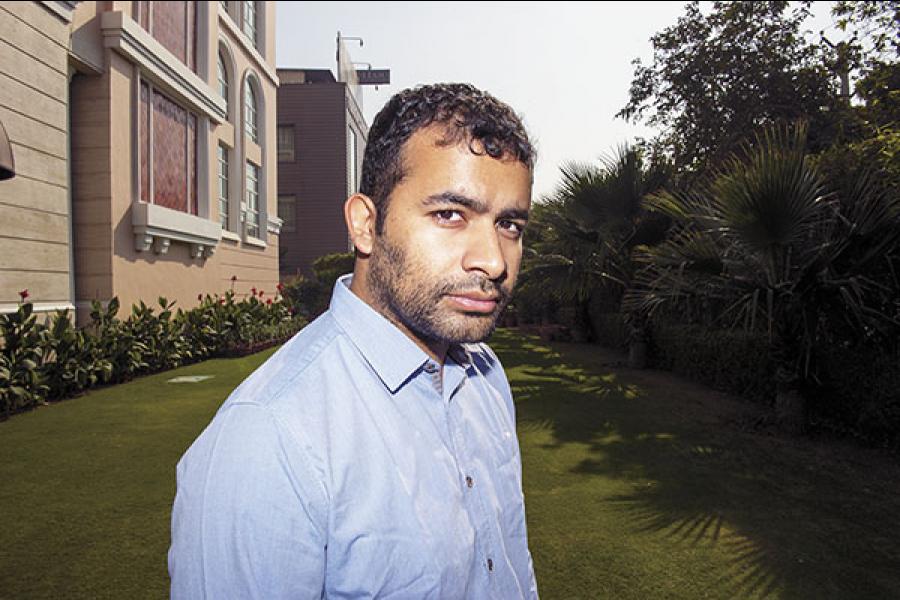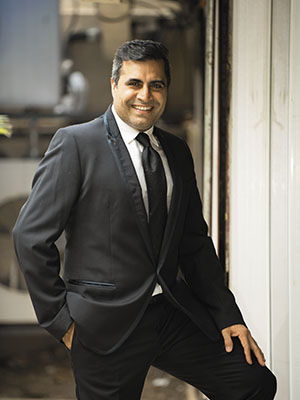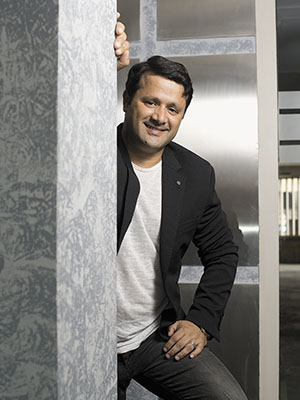
Live events and music fests draw crowds, boost local economy
The music festival ecosystem sustains artistes, audiences and local economies. But can it sustain itself?
The sleepy, upmarket Koregaon Park area in Pune doesn’t seem like the ideal venue for a music festival. Its quiet, tree-lined streets appear better suited to house the famous Osho Ashram that lies hidden among them, than to play host to raucous music lovers.
But in 2010, Sahej Bakshi, best known for his solo project Dualist Inquiry, played his set at the after-party of the NH7 Weekender’s closing ceremony there, to a crowd of 2,000-odd people. “I was super excited, jumping all over the stage, doing these ridiculous hand-waving dance moves,” Bakshi recalls. The artiste, whose set usually consists of electronica music with guitar influences, had broken onto the scene only recently. And although he had performed at clubs and smaller venues, this was particularly exhilarating. Five years and scores of festival performances later, both the crowd and the festival, then at a nascent stage, now seem relatively small. But back then “it was a huge deal for me,” says Bakshi.
The same could be said for that weekend’s subsequent impact on live music festivals in India. Though not the first event of its kind, the inaugural edition of the NH7 Bacardi Weekender marked the beginning of what would become India’s largest multi-genre music festival.
This coincides with the rise in the popularity of and demand for live events in general and intellectual property (IP)-driven events in particular. Just last year, the total number of organised events in India grew from 3,631 in 2013-2014 to 4,233 in 2014-15, according to a white paper compiled by industry body Event & Entertainment Management Association (EEMA) and Ernst & Young. (IP events are the intangible assets owned by promoters who own the rights to the event, which is, in this case, their intellectual property.)
Different Ideas, Similar Goals
“The idea for NH7 came when I was managing Pentagram [the band led by Vishal Dadlani] and they were booked to perform at the Glastonbury Festival [in England],” says Vijay Nair, CEO, Only Much Louder (OML), which runs the NH7 Weekender. The experience at Glastonbury left an indelible impression on him. “To see so many people come together, so many bands, the sheer beauty of it was overpowering,” he says.
It wasn’t an egalitarian non-profit enterprise either. The festival, which is held annually in Somerset, England, reportedly managed to sell all its 135,000 tickets within 25 minutes last year. “The economy of the place runs on this festival,” says Nair. Besides the impressive spectacle and the economics of the festival, there was one other thing that stood out for Nair. “You don’t build a festival with just one kind of music.”
Contrariwise, the first festival to make the concept of ‘live music festivals’ popular in India was based almost completely on one, hugely popular musical genre. Sunburn, arguably the first music festival of its scale to be held in India, was built under the broad umbrella of electronic dance music (EDM).
Sunburn was conceptualised by Shailendra Singh along with six employees of his media and entertainment company, Percept, and a consultant. Among these seven, at least two now hold important positions in the rapidly growing IP economy: Nikhil Chinapa (former VJ and currently the festival curator for Vh1 Supersonic) and Devraj Sanyal (MD and CEO at Universal Music Group, South Asia).
“Even back in 2005, it was clear to us that the demographic changes in India meant that we were going to have a huge population of young people with nothing by way of entertainment except Bollywood and cricket,” says Singh. It took five months for him and his team to set up the event. The festival had to be “50 percent music and 50 percent lifestyle”, he says. This meant that beside the stages that would host the visiting artistes, Sunburn would include activities ranging from volleyball to bungee jumping and even a shopping area. Importantly, says Singh, the quality of the experience had to be at par with the best in the world. “By this time people had access to international content, and they knew what music festivals abroad are like. You couldn’t cheat them.” This was also one of the reasons why it took Sunburn five years to break even, he says. In 2007, when the first Sunburn festival finally got underway, it managed to pull in a reported 10,000 people on the New Year weekend.
Like many people his age, Bakshi, then a student at the USC Thornton School of Music at the University of Southern California in Los Angeles, California, found himself at Sunburn in 2008. “Till that time, I was quite intent on remaining in the States, but just seeing Indian kids like me performing on stage was a really revolutionary experience for me,” he says. The fact that he could identify with the people on stage compelled him to return to India, says Bakshi.
This relatable quality, many say, is what makes EDM such a universally attractive model to base an IP property on. “It has no lyrics, so no one feels conscious about not knowing enough about the music,” points out Singh. Sunburn, he believes, tapped into the demand for live entertainment and the essential appeal of EDM.
Globally, few other events exemplify this appeal better than Tomorrowland, the gigantic electronic music festival that is held in Belgium every year. Last year, to celebrate its 10th anniversary, the festival reportedly sold 360,000 tickets in under an hour. The FICCI-KPMG Indian Media and Entertainment Industry Report for 2015 drew a comparison between Tomorrowland and Sunburn, estimating Sunburn’s 2014 ticket sales to be 140,000. The comparison drew a sharp contrast between the revenues of the two festivals. The report estimated Tomorrowland’s revenues to be 104.5 million euros (About Rs 748 crore). against Sunburn’s Rs 12.2 crore.
Low ticket prices are the primary reason for this large gap in revenue numbers. Consider that in order to clock Rs 748 crore in revenues, Sunburn would have to sell around 8.5 million tickets at the same prices. This also means that hypothetically, the festival would need to grow at about 50 percent annually for the next ten years to achieve these numbers.
This is not to suggest that ticket prices have necessarily obstructed growth: In fact, the EEMA/Ernst & Young white paper suggests that the organised events economy in India has grown from Rs 2,800 crore in 2011-12 to Rs 4,258 crore in 2014-15.
CA Media, a private equity firm that has picked up a 49 percent stake in OML is bullish about the sector’s growth. “We look at markets driven by the youth. We invest in IP-based properties in this space and the live space is the biggest example of the tremendous growth that the market is seeing,” says Vivek Raicha, head of investments, CA Media.
The new, old players
This upswing saw the entry of a large media conglomerate into this space in 2013. Although Viacom18 (part of Network 18, publishers of Forbes India) had dabbled in the business of live events, they bet really big on it in 2013 with the launch of the Supersonic Festival. “Strategically, the decision was clear,” says Jaideep Singh, senior VP & business head at Viacom18’s Integrated Network Solutions. “We were not entering the live music space to appeal to a few thousand people.”
A significant driver of this effort was Nikhil Chinapa, who had by now moved to Viacom18. Supersonic was built on the lines of Sunburn, on the back of Chinapa’s experience in creating stellar festival lineups. While both the festivals have largely relied on the tried-and-tested formula of bringing global EDM stars to Indian shores along with a mix of lesser known Indian and foreign talent, there is some divergence between the content these two have on offer. Sunburn has focussed on EDM, while Supersonic has attempted to create a more eclectic electronic music lineup. It has, for instance, hosted Pretty Lights and more recently Skrillex, both of whom don’t necessarily fit the narrow definition of a mainstream EDM artiste.
Both these approaches have yielded results in terms of drawing audiences. However, there remain concerns about the sustainability of a model that is based on drawing big stars who demand substantial pay cheques for performing in India.
Although Supersonic, which is a direct competitor of Sunburn in Goa, was Viacom18’s flagship event, it was followed by a number of other launches. These included a whole gamut of genre-based music festivals.
“It is Bollyland (a music festival based on Bollywood music) that is going to be huge in the live space. We want to take Bollyland across the globe as the audience for Bollywood music and EDM is increasing,” says Mohamed Morani, director, Cineyug, an event management company that works with Viacom18 to create Bollyland. This October, DJ Chetas who came into the limelight because of his gigs with Bollyland, was ranked 59th on the British monthly DJ Mag’s list of the world’s “Top 100” DJs.
Percept, OML and Viacom18 and their respective flagship events make up a majority of the music festivals that are held in India today. This is thanks to the spin-offs that take their festivals to places like Shillong (NH7 Weekender), Daman (Sunburn) and sometimes even beyond Indian borders.
While these three big labels dominate, there are several other noteworthy music festivals that dot India’s musical landscape. Ziro, a festival in Arunachal Pradesh, brings together independent acts from across genres to the eponymous small hill town in which it is held. Some other notables are Magnetic Fields, which is held at Alsisar Mahal near Jodhpur in Rajasthan, and the Hornbill Festival in Nagaland. These festivals go beyond music and attempt to provide audiences with an immersive cultural experience. Although they haven’t scaled up, primarily by virtue of their format which depends heavily on a unique venue, these festivals are successes in their own right. And they’re not alone.
In September this year, Universal Music Group bought a 50 percent stake in Enchanted Valley Carnival (EVC), a music festival held in Aamby Valley City near Pune, for an undisclosed sum. “We want to create a unique festival that will welcome people who want to try something different both in terms of experience as well as music. We plan to do a three-day camping festival at a reasonable price,” says Sanyal of Universal Music Group. This December, the festival will feature artistes like Fatboy Slim and DJ Tiësto.
Galvanising the troops
Consequently, the events continue to grow, both in size and number. The EEMA/Ernst & Young white paper estimates the number of organised events, of which music festivals and events are a major part, to grow from 4,233 in 2014-15 to 5,329 in 2015-16. Significantly, they continue to provide a fertile breeding ground for upcoming talent. “You play at a festival primarily because you can play to a much larger audience,” says Udyan Sagar, a DJ who goes by the name Nucleya. While audiences at clubs and smaller gigs may be familiar with an artiste’s music, music festivals allow artistes to reach new audiences, he says. And that’s not all.
According to Tej Brar, artiste manager at OML, about 75 percent of an artiste’s revenue comes from live events, while the remainder is generated by endorsements. Record sales, the original barometer for an artiste’s success, have now become a peripheral statistic in terms of revenue generation.
From being the single largest revenue stream in the past, record sales, or more commonly, song downloads are increasingly used as a marketing tool. “What I realised was that putting up a payment gateway would be a hindrance to my music’s popularity,” says Bakshi. Instead, and this is commonplace for most artistes today, Bakshi decided to give away his music for free, in exchange for the listener’s email address. This enabled him to get his fans to attend his performances instead of making a small amount of money from legal downloads. “It has been a good strategy to sort of galvanise the troops,” he says.
On the face of it, the future of the sector looks bright. The demand for live music events and festivals is being driven not just by big foreign artistes but also by homegrown talent like Bakshi and Sagar. Besides, few sectors are as perfectly aligned to benefit from India’s much-touted demographic dividend as this, say experts.
Probe a bit further though, and some shadows begin to appear. The basic unit used to measure the success of a festival is flawed, says Nair. The attendance is “absurdly” calculated by counting the number of people attending each day, he says. This leads to inflated numbers as the same person attending a festival over three or four days will be counted as three or four different people. Nair believes that not only is this misleading, it is also a hazard for first-time promoters who make their calculations based on these numbers and are later unable to meet their revenue targets. “The NH7 Weekender in Pune draws about 28,000-30,000 unique visitors over the weekend,” says Nair. “I could tell you the number is 90,000 by the same logic.”
Moreover, organisers uniformly cite the lack of venues in metro cities as the number one challenge for the industry, says the FICCI-KPMG report. But while this may hold true for standalone events, it is not necessarily so for music festivals. In fact, the largest music festivals the world over, from Glastonbury and Tomorrowland to Coachella and Burning Man (which is held in the open Black Rock desert in Nevada) all take place at a significant distance from large cities.
Ending on a high-note
As a result, these festivals, across the IP events space, contribute significantly to the local economy. A notable example in this regard is the Jaipur Literature Festival (JLF). “We did a straw poll of a cross-section of businesses in Jaipur,” says Sanjoy Roy, MD, Teamwork Arts, which organises the JLF. Teamwork Arts, which also hosts smaller music festivals like Sounds of Freedom, found that the JLF helped bring in an additional Rs 20 crore into the local economy.
Despite the evidently positive contribution that these festivals can have on the local economy, there is scarcely an industry more prone to government interference. “The government doesn’t even consider music tourism to be real,” says Singh. The malaise lies not only in the convoluted processes for licences, but also in the arbitrary nature of law enforcement when it comes to these events. “A policeman can just walk up to your festival and shut it down,” says Nair, who has consistently been advocating a better system of approvals for festival promoters.
There is some hope though, says Nair. In early September, the Delhi government announced that it would have single-window clearance for events in the city. He hopes that the other states will follow suit.
Besides, music is a continuously evolving business. While the IP events space, fuelled by India’s insatiable demand for entertainment has continued to grow, experts suggest that the sustainability of the business models will define its future course.
Meanwhile, as the season gets under way, the music festival machinery is gearing up for another quarterly cycle. (The music festival season in India extends from October to March.) “I performed in Shillong, then in Kolkata and I’m also going to play at a college in Pilani. Then you spend two days at home, and it begins again,” says Bakshi.
The artistes aren’t the only ones involved. It takes more than a village, or a workforce of about 5,000 people to set up a festival like Sunburn, says Singh. From fire safety and crowd control, every eventuality has to be accounted for while setting up a music festival of that scale, not to mention the elaborate stages and all that goes with them. The financial aspect of the business isn’t very typical either. “Basically, our balance sheet begins from zero every year,” says Nair. It is imperative then that firms, not unlike some of the artistes that they sign on, end on a high note.
(This story appears in the 11 December, 2015 issue of Forbes India. To visit our Archives, click here.)


















